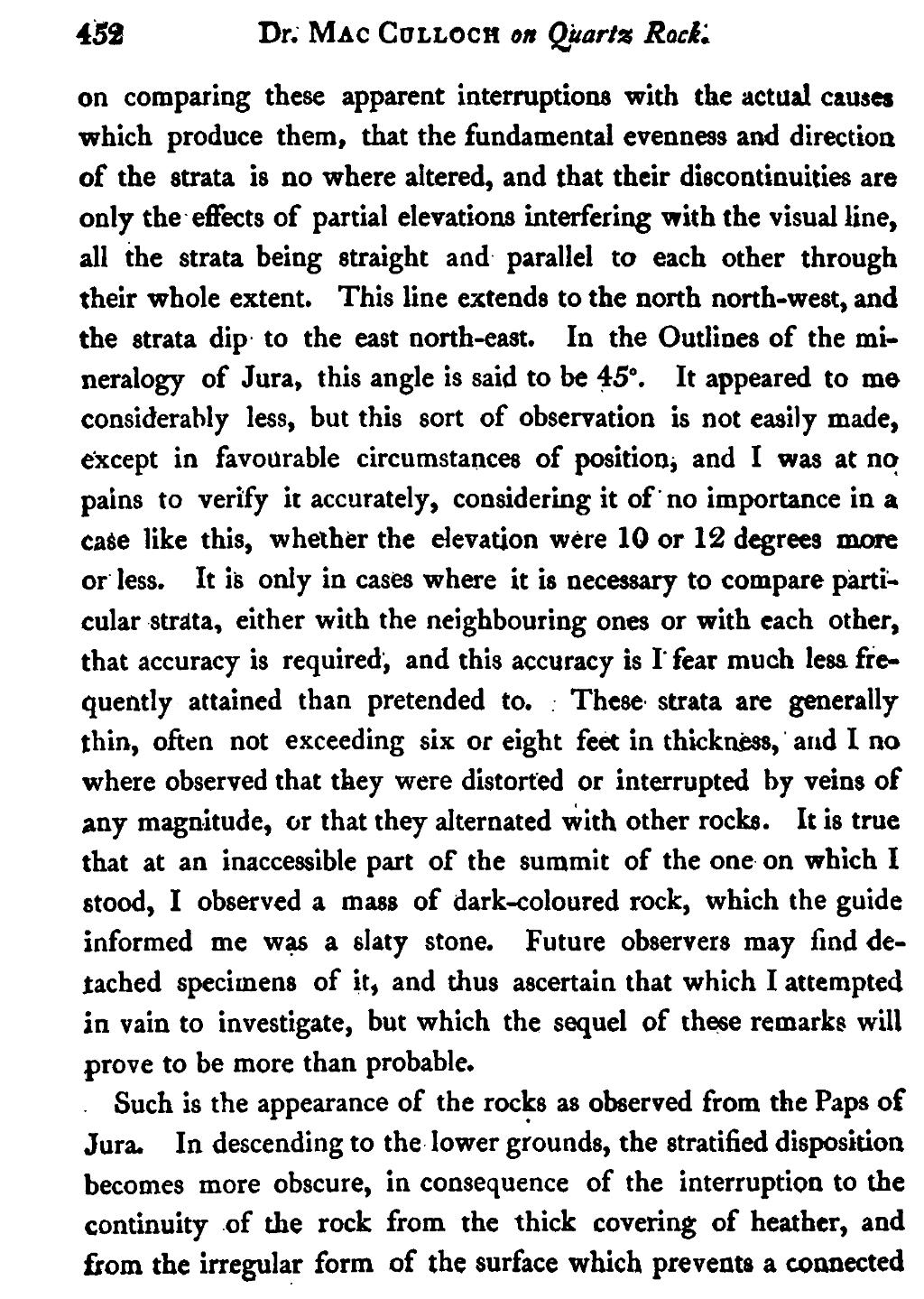on comparing these apparent interruptions with the actual causes which produce them, that the fundamental evenness and direction of the strata is no where altered, and that their discontinuities are only the effects of partial elevations interfering with the visual line, all the strata being straight and parallel to each other through their whole extent. This line extends to the north north-west, and the strata dip to the east north-east. In the Outlines of the mineralogy of Jura, this angle is said to be 45°. It appeared to me considerably less, but this sort of observation is not easily made, except in favourable circumstances of position, and I was at no pains to verify it accurately, considering it of no importance in a case like this, whether the elevation were 10 or 12 degrees more or less. It is only in cases where it is necessary to compare particular strata, either with the neighbouring ones or with each other, that accuracy is required, and this accuracy is I fear much less frequently attained than pretended to. These strata are generally thin, often not exceeding six or eight feet in thickness, and I no where observed that they were distorted or interrupted by veins of any magnitude, or that they alternated with other rocks. It is true that at an inaccessible part of the summit of the one on which I stood, I observed a mass of dark-coloured rock, which the guide informed me was a slaty stone. Future observers may find detached specimens of it, and thus ascertain that which I attempted in vain to investigate, but which the sequel of these remarks will prove to be more than probable.
Such is the appearance of the rocks as observed from the Paps of Jura. In descending to the lower grounds, the stratified disposition becomes more obscure, in consequence of the interruption to the continuity of the rock from the thick covering of heather, and from the irregular form of the surface which prevents a connected
